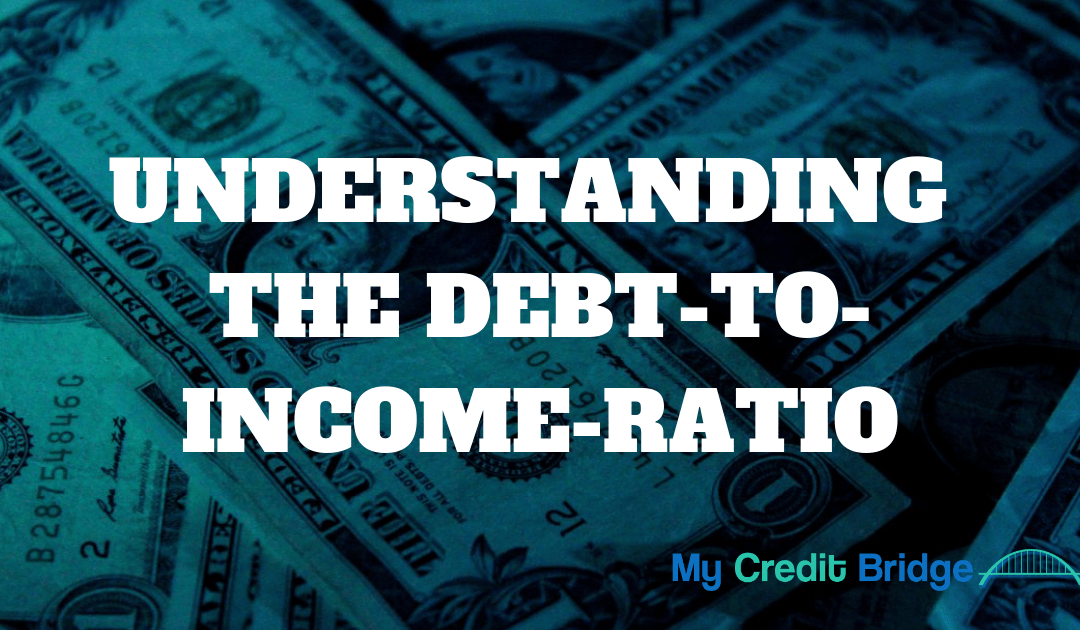THE DEBT-TO-INCOME RATIO
When applying for a home loan or even a car loan debt-to-income ratio comes up. Especially since the great recession and the housing bubble bursting.
The home loan industry has been forced to clean up its act when it comes to mortgage lending.
The debt-to-income ratio is evermore important for your home loan approval. This makes understanding the debt-to-income ratio imperative.
WHAT IS THE DEBT-TO-INCOME RATIO?
Simply put, it is all of your total monthly expenses divided by your total monthly income.
Expenses include any debt payments and other expenses you have going out on a monthly basis, like a credit card, mortgage, car loan, etc.
Income is based on gross income, meaning income before taxes and/or any deductions that are taken out.
For example, if your monthly expenses are $2,000 and your monthly income is $4,000, then your debt-to-income ratio is 50%. $2,000 is 50% of $4,000.
50% is too high of a ratio and in many cases, your home loan application would be denied due to your ratio being too risky unless you get a qualified mortgage or you are in some type of low-income home loan program.
A qualified mortgage is a home loan that has more stable features in it making the loan more affordable, which allows you to have a higher debt-to-income ratio.
For more info on low-income home loan programs check out my previous blog post: How To Get a Home Loans With Bad Credit.
Now that you understand what the debt-to-income ratio is you will need to know what lenders consider the ideal ratio percentage.
MINIMUM REQUIREMENTS
FOR THE DEBT-TO-INCOME RATIO
In most cases, lenders are going to require at least a 43%-45% DTI ratio. Remember, the higher the percentage, the worse the DTI ratio is. The optimal or ideal ratio would be 36% or lower.
Banks will offer you lower interest rates when you have a low DTI ratio. The low ratio makes you less likely to default on the loan.
HOW TO LOWER YOUR DTI RATIO
To improve your DTI ratio you will need to lower your monthly debts or increase your gross monthly income. I know, it’s easier said than done, however, it can and has been done countless times.
Using the example from earlier, where you have $2,000 in monthly debt payments and $4,000 in gross income, you could start paying more on a credit card to get it paid off to lower your debt payments.
You could also pay off your car loan to eliminate that debt payment and lower your DTI ratio.
Or you can increase your gross monthly income by getting a promotion at work, working a second job or starting an online business.
Either way, it will result in a lower DTI ratio.
DTI RATIO CONCLUSION
Hopefully, you have a much better understanding of the debt-to-income ratio. The key is to have a DTI ratio that is 36% or lower.
Lenders use your DTI ratio to know how risky it will be to lend you the money.
If you are higher than 43%-45% than your chances of being approved will drop.
Look into qualified mortgages if you have a high DTI ratio, these home loans will have more favorable approval odds and will make the loan affordable for you to pay.
If your DTI ratio is too high, you must do the work and make sacrifices to decrease your DTI ratio.
Remember, you can pay off a credit card or a car loan to decrease the DTI ratio or you can increase your income with a promotion, or get a second job or start a home-based business.
To know your rights with lenders and learn more info check out the Consumer Financial Protection Bureau (CFPB).



